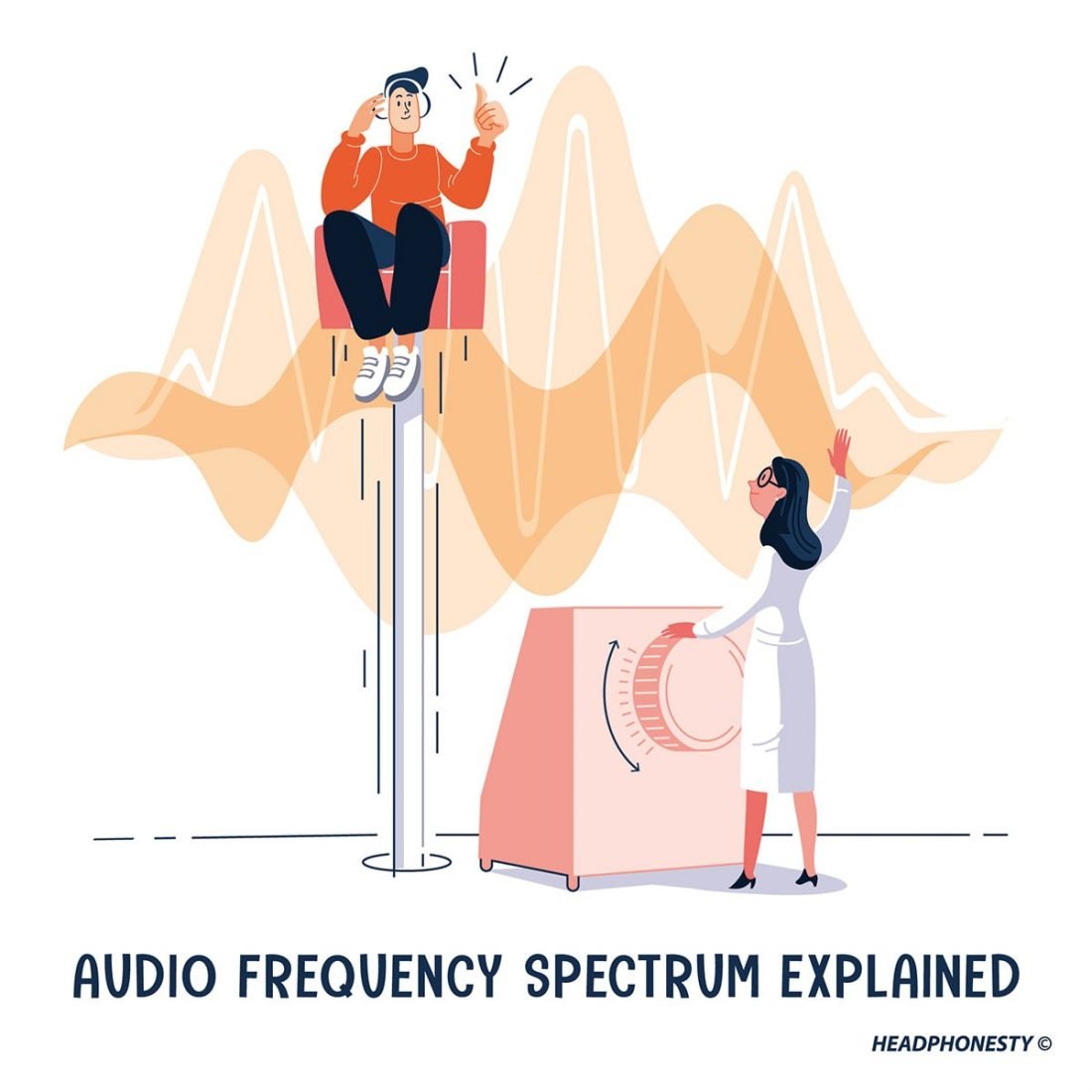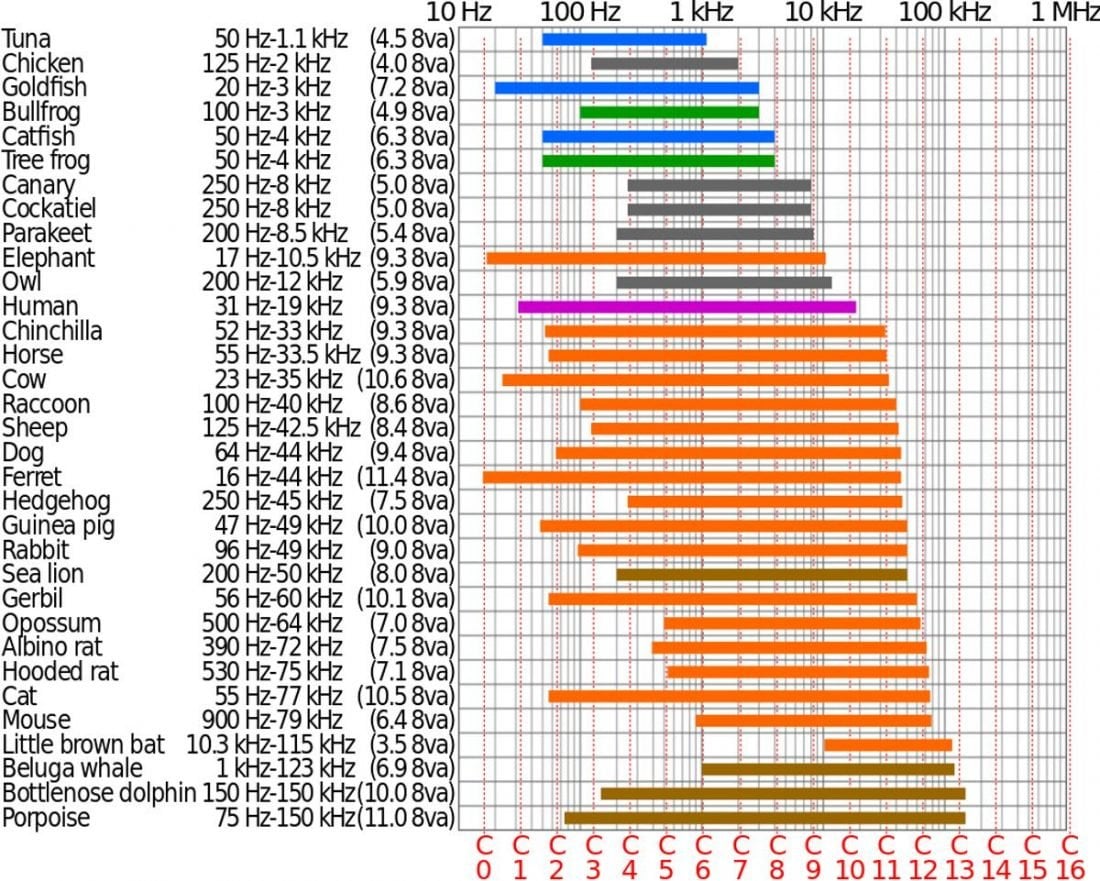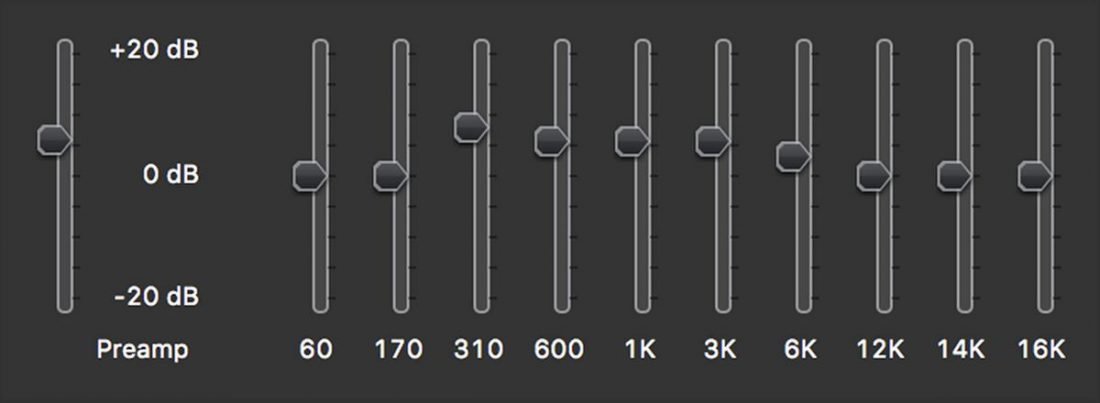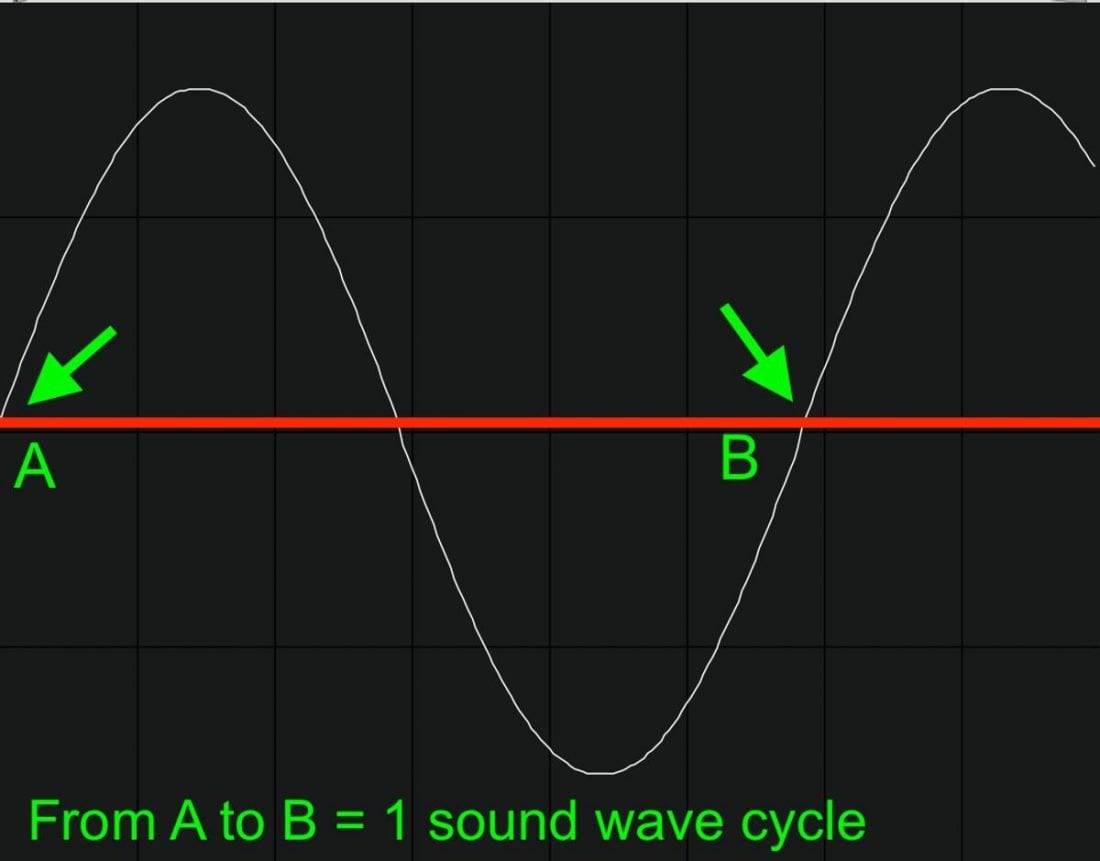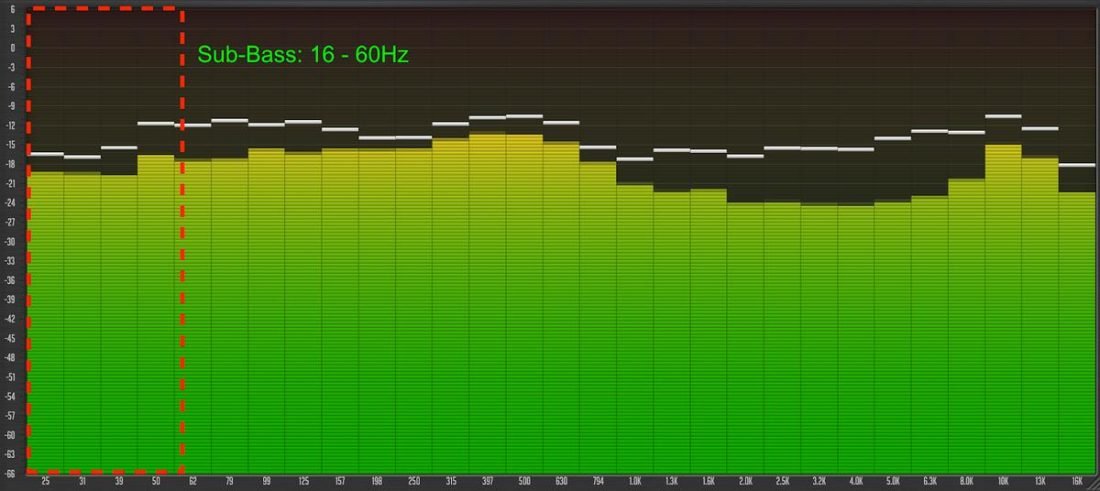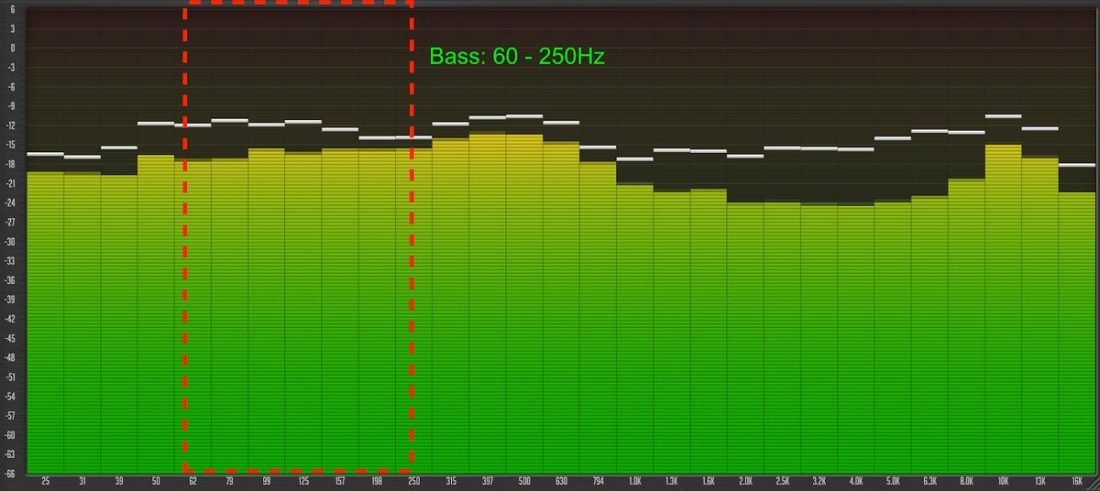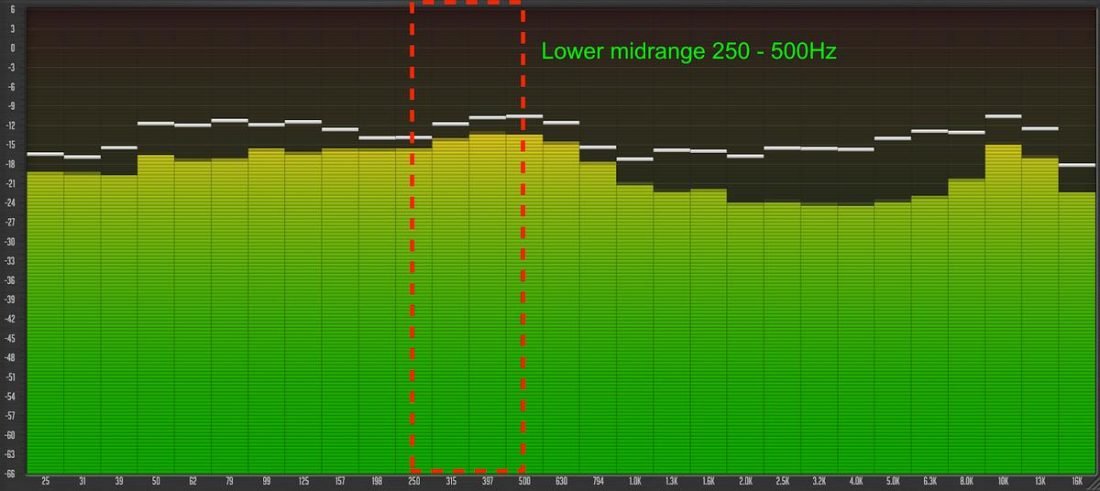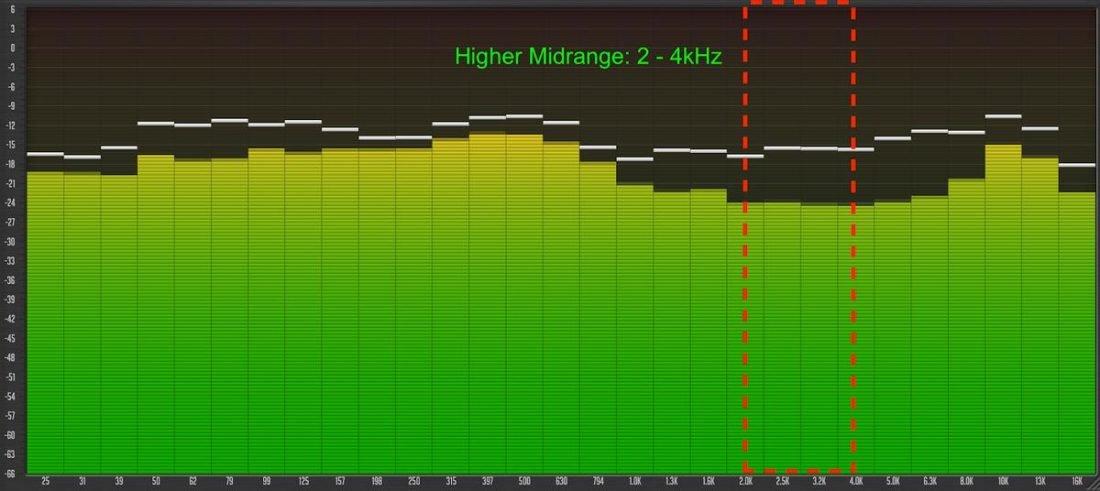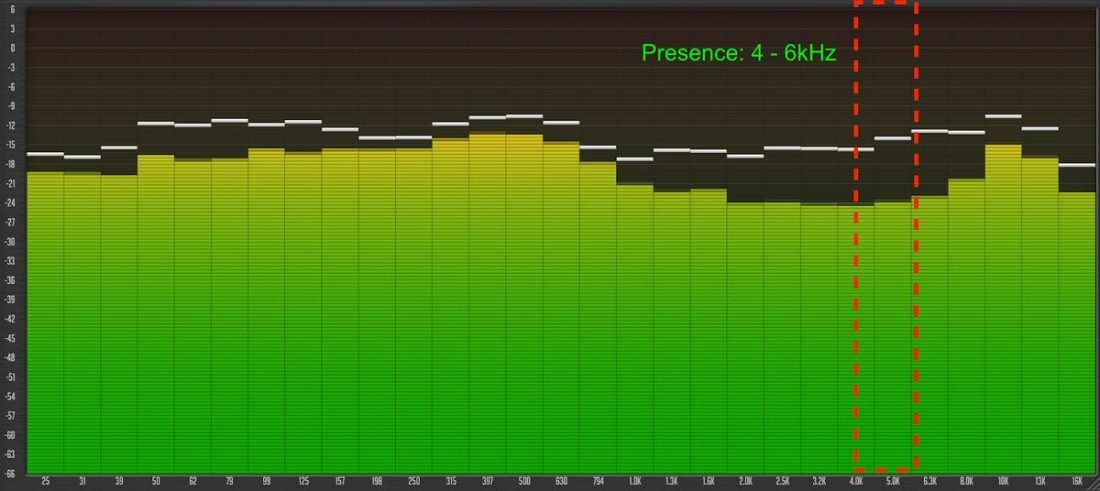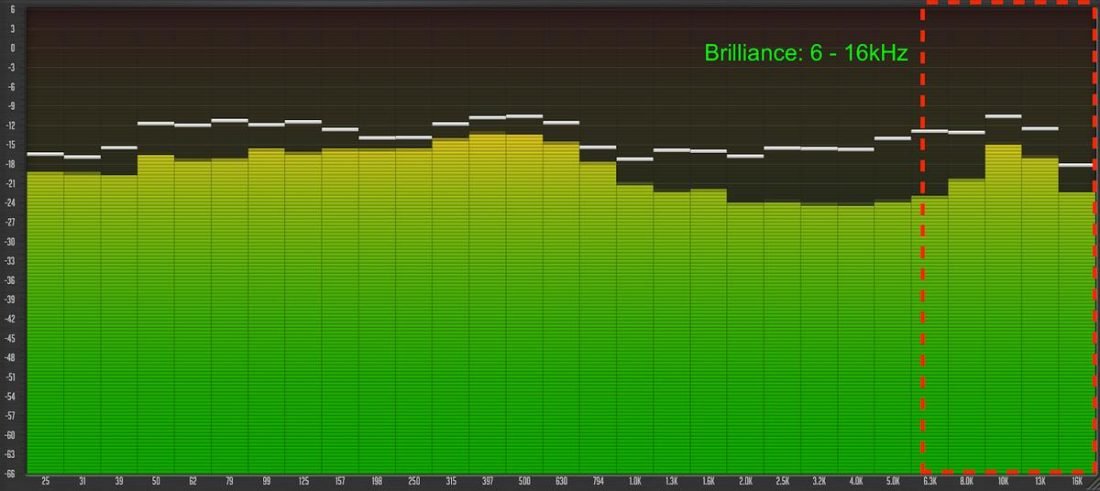The audio frequency spectrum represents the range of frequencies that the human ear can interpret. Sound frequency is measured in Hertz (Hz) unit. This audible frequency range, in the average person at birth, is from 20Hz to 20000Hz, or 20 kHz. Due to age and other factors, including hearing damage, this range degrades over time, but for the average person, the 20 – 20000Hz range describes, and also represents what we hear in terms of frequency, or in terms of music, pitch. Having an understanding of this audio spectrum can help in a number of areas;
Discussing sound and music Understanding technical specifications Adjusting a graphic equalizer Understand what you hear better
Depending on where you are reading about the audio frequency spectrum, the terminology can be technical, or subjective, further complicating your understanding of it. Knowledge of the audio spectrum can be just information that’s nice to know about and understand. We all love music, so gaining a deeper understanding of it is fun. There may be times when you want to adjust the balance of the audio spectrum, using a graphic equalizer (EQ). Some knowledge can help you produce the results you’re after, and eliminate the guesswork. In this article, we will explain the audio frequency spectrum, using subjective and basic technical terminology. This will advance your knowledge of the most commonly discussed details on the subject.
What Are Sound Frequencies, Anyway?
When a musical sound is produced in a medium such as air, it causes air molecules to vibrate. When these vibrations hit our ears, our ears vibrate at the same frequencies, and the signal is converted from a sound in the air into electrical signals that our brain interprets as sound. The frequency refers to the number of times per second that a sound wave’s cycle repeats. The greater the frequency, the higher the pitch you perceive. The image above was created using a digital oscilloscope. We see a single cycle of a sine wave, a digital representation of a repeating sound wave. A sine wave is the most basic sound we can produce. The length of the cycle is between points A and B. Frequency is a measurement of sound in cycles per second, or Hertz (Hz). If a sound has a frequency of 20Hz, an extremely low frequency, it is cycling 20 times a second. If we produce a sine wave of 10000Hz (10kHz), the sound is cycling incredibly fast, 10000 times a second, producing a much higher frequency and pitch.
Representing Sound
In general, music listeners don’t have access to oscilloscopes, and the representation is only meaningful for explanation or when analyzing basic sounds. Music is far more complex. A more common tool you come across is a graphic representation, part of a graphic EQ device, in software or hardware form. This image is a graphic representation of the sounds already mentioned, a 20Hz and a 10kHz sine wave. You can see how the frequency is divided in the scale along the bottom of the image, the X-axis. The vertical, Y-axis, represents the amplitude, which is related to volume, of frequencies in that range. Music is far more complex than these basic tones. It contains thousands of frequencies mixed together. In graphic equalizers, you have controls to cut and boost frequency ranges, to adjust the audio spectrum and tone of the music. The full frequency range of the audio spectrum of music is complex. It is divided up into ranges to make it more manageable and easier to describe and control.
Hear It For Yourself
Wear your favorite headphones and lower the volume to a suitable level. Listen to the sine wave audio output in each of the frequency bands.
Dividing the Audio Frequency Spectrum
The frequency spectrum is broken up into seven bands, or ranges. Sometimes less, but we will discuss the common frequency ranges you will come across; The frequency where a range begins and ends can vary by a small amount, but these are the common ranges.
Simplified terms of the frequency spectrum
These ranges can be also be simplified, often on budget equipment or through basic software control. Sub-bass and Bass are grouped together as “bass”. It is possible to group the midranges together to be just “Mids”, or sometimes the midrange is left out, with only Lower and Higher midranges being referenced. The Presence and Brilliance ranges can be grouped together and just called “Highs”. These are the technical terms used to describe frequency bands and the range of frequencies contained within them.
Subjective terms of the frequency spectrum
You will often come across more subjective terminology generalizing these ranges. The Bass ranges are often referred to as the “lows” or the “low-end”. All the midrange content can get referred to as the “mids”, and everything above that as the “highs”. All this terminology, technical and subjective is correct. Which is being used just depends on the context.
Sub-Bass: 16 – 60Hz
Sine wave demo (40 Hz): The sub-bass frequency range lies from 16 – 60Hz. In order to accurately reproduce this extremely low range, you need quality headphones or full frequency speakers or a subwoofer. It requires more power from your amplifier and it needs to apply this with no distortion. In speakers, the bass woofer size, and speaker design, is directly related to how much bass can be produced. When configuring an EQ or subwoofer, be careful not to boost this range too much. While the earth-shaking power can be impressive, too much can leave your music sounding “muddy”, sounds become indistinct. This is heard as a smearing of the frequencies in this range, which can also affect the bass and lower midrange. Sounds and instruments within these ranges become indistinct, due to the excessive energy. Even though we cannot hear below 20Hz, occasionally there is frequency content below that. This is used in films and television for sound effects, or by experimental music composers. Musically speaking, this is the domain of instruments such as kick drums, bass synthesizers, and some orchestral instruments such as harp and bassoon.
Bass: 60 – 250Hz
The bass range is a range that many people are passionate about. The bass range area lies around 60 – 250 Hz. Historically, it is a band that has seen the most advancement as recording and reproduction technology has developed. Technologies such as speaker design, subwoofers, and digital signal processing allow for greater representation of this range. To recreate the bass range accurately requires more power than the ranges above it. One of the main reasons for this is that our ears are less sensitive in this range. To reproduce bass accurately requires powerful amplifiers with low distortion.
Lower Midrange: 250 – 500 Hz
The lower midrange, as well as the upper section of the bass range, is important as it contains the fundamental frequency of many acoustic instruments. The lower midrange lies around 250 – 500 Hz area.
Fundamental Frequency
The fundamental frequency of a sound is the frequency that determines the pitch of the sound. It is almost always the loudest frequency within a sound. When this range is not heard accurately, instruments and the voice sound unnatural. It is particularly noticeable with singing as it is the range where the body and character of the voice resides. When engineers are calibrating a sound system they will often use their own voice, speaking into a microphone. Any inconsistencies with the system will quickly become apparent in how the voice is reproduced, it is one of the most familiar sounds to us.
Midrange: 500 – 2000Hz
We are now entering into the center frequency range or midrange, an important range where the content of dialogue, vocals, and film and TV sound effects reside. Cheaper headphones, speakers and mobile phones focus the majority of their output in this range. The midrange lies around the 500 – 2000 Hz area. It is the range beyond the fundamental frequency and lower harmonics or overtones, it adds clarity and detail. When sound engineers and producers want music to “pop” out of the radio, this is a range they focus on. Excessive boost in the 1kHz range can make your music sound “horn-like” or have a metallic quality. If can also cause listener fatigue.
Higher Midrange: 2 – 4kHz
The higher midrange is the range where your ears are the most sensitive. Consonant sounds in the voice, such as k, p, s, t, are found in this range. In order for speech and singing to be clear this range needs proper clarity. The higher midrange signal is found in the 2 – 4 kHz area. Due to the design and evolution of our ears, the ear canal (the section that goes from the outer ear to the eardrum) naturally resonates in a range of around 3.5kHz. You can look at it as a built-in amplifier, it allows us to pick up sounds in this range better. Due to this, if music is lacking in this range we immediately notice it. The opposite is also true, too much emphasis and the music becomes irritating and hard to listen to. As this area is important for interpreting details in vocal sounds, those interested in choral music, opera, podcasts, or anything that involves the voice will greatly appreciate headphones or speakers that shine in this area. As well as the voice, percussion sounds reside in this area. Well reproduced midranges, or the mids, are what define great headphones and speakers. When auditioning either, this is a key area to focus on, making sure it is detailed, has depth, and sounds natural.
Presence: 4 – 6kHz
The presence range is responsible for upper range definition in your music. When this range is well-produced and clear, you feel like you are sitting in front of the music being performed. The presence signal is found in the 4 – 6 kHz area. In the voice, this is the range where “s” sounds are. If over-emphasized it creates a distracting listening experience. As classic albums get remastered, presence is often boosted to produce music that sounds more modern, or compares with modern production techniques. When music is played on radio or streaming services, record companies are interested in consistency in playback. Modern music is more hyped in this range. This is a similar issue to the loudness wars. When music is well-balanced in this range, it adds qualities such as warmth and sweetness to high strings, synths, and orchestral music. If overdone it adds harshness and sibilants, not just to voices, but also cymbals and hi-hats.
Brilliance: 6 – 16kHz
As the name suggests, the brilliance range adds brilliance and high-end clarity to music. The lower range can still be sibilant so excessive boosting in this range is not a good idea. The brilliance range lies around 6 – 16 kHz area. The 10kHz is a range that affects clarity. This is heard as high-frequency sheen, and can give the music detail and sparkle. Moving up from 10kHz is often referred to as the “air” band. It’s hard to describe what is happening in musical terms, but you can imagine the air being excited when at an orchestral performance. There are few instruments, except for electronic sounds, that naturally have any loud harmonics, or frequency content in this area so it’s heard as a global effect across the complete piece of music you are listening to. When this range of frequency is overemphasized, it sounds unnatural as they are few sounds in the real music, or nature that reside here. One of the limitations of vinyl records, and how they are produced, is that their frequency response becomes attenuated and loses energy above 15kHz. This is one of the claims as to why they have a warmer, more natural sound, that is preferred by many listeners.
The Big Picture
If you want to understand how your speakers and headphones work, and how to set up your equipment, having some knowledge of the audio frequency spectrum is beneficial. It is a fact that the resolution of our ears, the detail we can interpret, far exceeds that of our visual sense. If something is not right, we are quick to notice it. When the frequency balance is perfect, whether we are fully conscious of it or not, it elevates the listening experience. You also want to reproduce your music as the artists, sound engineers, and producers intended. Paying attention to the audio spectrum, configuring and calibrating your system, allows you to appreciate all the effort and passion that went into making it. Armed with this knowledge of the audio frequency spectrum, you can now make sense of both the technical and subjective conversation that revolves are music and its reproduction.
Pin this to save the article
